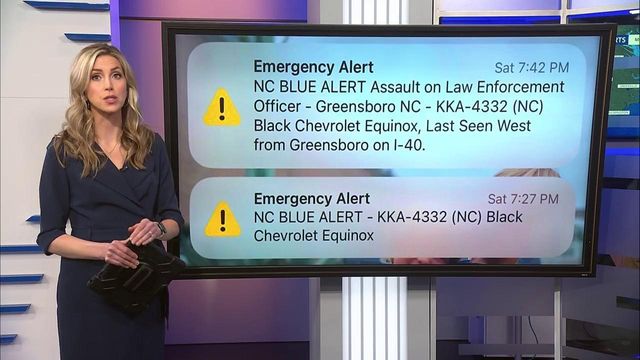Amber, Ashanti, Blue, Silver: What do the different alerts mean?
Amber, Ashanti, Blue and Silver Alerts: What do they mean and when are they used?
Posted — UpdatedAmber, Ashanti, Blue and Silver Alerts: What do they mean and when are they used?
Read on to find out.
The AMBER Alert System began in 1996 after 9-year-old Amber Hagerman was kidnapped and brutally murdered in Texas. AMBER stands for America's Missing: Broadcast Emergency Response.
The Ashanti Alert Act was passed in 2018. It was named in honor of Ashanti Billie, who was abducted and killed in 2017.
A Blue Alert is used to notify the media and the public when a law enforcement officer is seriously injured or killed. The alert will include details of any suspect or vehicle to help law enforcement and the public quickly identify and catch a suspect.
North Carolina is one of 36 states to use the Blue Alert in this way.
The Blue Alert started in Florida, where the first law, known as the "LEO Alert" was passed in 2008. It has been law in North Carolina since 2016, but it appears that Nix's shooting was the first time it was widely used in the Tar Heel State.
Related Topics
• Credits
Copyright 2024 by Capitol Broadcasting Company. All rights reserved. This material may not be published, broadcast, rewritten or redistributed.






